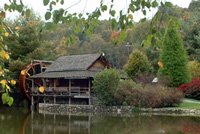
INTRODUCTION
"Greenhouse growers harness the biology of photosynthesis and flowering to create a marketable product. Like other raw materials needed for plant growth (e.g., plastic, and nutrients), light is not free. We increase light levels by investing in alternative technologies such as state-of-the-art retractable roof greenhouses to maximize available sunlight, or installing high intensity discharge (HID) lights. Alternatively, we may choose to save costs and sacrifice potential yield by using older or simpler greenhouses with lower light transmission. Yet another option is to relocate production (e.g., cuttings or cut flowers) to areas with naturally high sunlight during production months. Light clearly has an economic value.
Growers can benefit from knowing how to best manage light. For example, you may be able to grow an extra production cycle of plugs or bedding plants, hasten flowering of perennials for higher out-of season prices, or make more informed decisions when purchasing new structures and equipment." ---from Lighting Up Profits: Understanding Greenhouse Lighting. 2004. (edited by Fisher and Runkle. ISBN 1-892829-10-X)
LEARNING OBJECTIVES- Explain the basic process of photosynthesis (hopefully this is somewhat of a review)
- Discuss how light intensity affects growth
- Describe the possible effects of day length (photoperiod) on the flowering process
- Compare and contrast different types of supplemental lighting.
- Explain the methods used to provide artificial long- and short-day conditions
TERMS TO KNOW
photosynthesis
HID lights
black cloth
cellular respiration
fluorescent lights
light quality
chlorophyll
incandescent lamps
phytochrome
carbon dioxide
light compensation point
germination
electromagnetic radiation spectrum
light saturation point
LPS
visible light
phototropism
HPS
PAR
photoperiod
Metal Halide Lamps
inrared radiation
quinox
lumens
Short-day plants
light meters
Long-day plants
READING ASSIGNMENT and ACTIVE LEARNING EXERCISES
1. Read pages 399 - 431 of the textbook. Chapter 12. Light and Temperature
2. Read parts 1 and 1.1 of the Photosynthesis review on wikipedia.
3. Read the NGMA's Helpful Hints on Supplemental Lighting.
4. Read Evaluating Supplemental Light for Your Greenhouse by Fisher et. al.
5. Watch the following two slideshare shows after reviewing the reading assignments.
STUDY QUESTIONS
PART I. Fill in the blank (2 points each)
1. The process by which green plants convert light energy of the sun into chemical energy is called ________________. (1 pt).
2. The green pigment in the leaf that helps convert the light energy is called ______________. (1 pt)
3. Water used in this conversion process is adsorbed by the roots. The water is the source of the ________________ ions that combine with carbon dioxide to form carbohydrates.
4. Solar energy (light) is transmitted in the form of _________________.
5. Light intensity is measured in units called _____________________.
6. Fluorescent lamps are a better source of light than incandescent lamps because the incandescent lamps give more _________ than light.
7. Excessively high light intensities in the summer may cause __________ of the flowers of chrysanthemums, hydrangeas, and geraniums.
8. Those plants that flower when the day length is longer than a critical number of hours are called _____________- day plants.
9. House plants grown near a window in winter may lean toward the light in response to a reaction called _____________.
10. The light-sensitive substance within plants that responds to day length is a soluble protein called _________.
PART II.
1. What is the most economical type of lamp used for supplemental greenhouse lighting? Explain why. (10 pts).
2. What is a good rule of thumb for the minimum amount of accumulated PAR that most ornamental crops should receive? (answer should be in micromoles/m2/day). (5 pts).
3. Metal Halide lamps are expensive, but they are occassionally used because of one big advantage. What is this advantage? (5 pts).
4. Which season of the year is it usually most critical to provide supplemental lighting in North America? Why? (10 pts).
5. List at least 5 factors that are important to consider when deciding whether or not add supplemental lighting to a greenhouse production system. Briefly explain why each is important. (10 pts).
6. What are some additional challenges that might arise when supplemental lights are added to a greenhouse production system? In other words what other things will the grower have to adjust for in her/his crop production plan? (10 pts).
PART III.
1. Based on the graph below answer the following two study questions. Remember your answer must be in %. Show your work. (15 pts). If your HPS lighting system provided 5 mol per day/m2 of PAR and you lived in Columbus, Ohio; What % increase in total light would you receive in January by running the supplemental lighting system? How about in July?
2. Based on the graph below answer the two study questions but for Anchorage instead of Columbus. Show your work (15 pts).
PART IV. Greenhouse Design Project (Final Assignment Prior to Online Presentation) Complete the assignment in this PDF file.





1 comment:
wow! I never realized that the light & temperature are so important in Greenhouses operation, I also run a small farm, and I could use this information in my farm and get better production.
Post a Comment